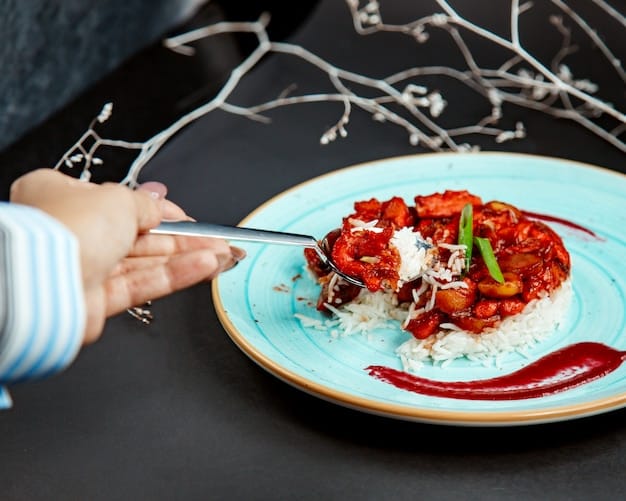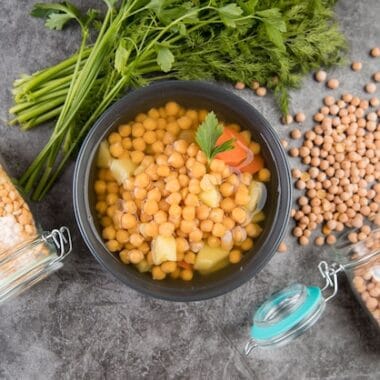
Imagine sinking into a bowl of creamy mac and cheese after a long day, only to discover that instead of the usual elbow pasta, it’s made with spiralized zucchini and a hint of spicy jalapeño. Or picture biting into a hearty bowl of beef stew, but with tender chunks of jackfruit replacing the meat, adding a layer of plant-based innovation. These are the kinds of culinary adventures that modern comfort food invites us to explore — familiar dishes, reimagined with fresh ingredients, global influences, and health-conscious twists.
In this blog, we’ll embark on a flavorful journey into the world of modern comfort food recipes with a twist. We’ll explore how chefs and home cooks alike are transforming traditional favorites to suit contemporary tastes, dietary needs, and culinary curiosity. Whether you’re a seasoned foodie or someone just starting to experiment in the kitchen, this guide will provide inspiration, practical tips, and expert insights to elevate your comfort food game to new heights.
Read Also: Unexpected Ingredients for Pasta Dishes: Unlocking New Flavors and Surprising Twists
The Rise of Modern Comfort Food: Why Reinvent the Classics?
Comfort food has always held a special place in our hearts. It’s nostalgic, satisfying, and often tied to cherished memories. However, as our understanding of nutrition deepens and culinary trends evolve, so too does our approach to comfort food. Today’s cooks are seeking dishes that deliver that warm, cozy feeling but also align with health goals, sustainability, and global flavors.
According to culinary trend reports from sources like Food & Wine and Bon Appétit, there’s a noticeable surge in dishes that blend tradition with innovation — think gluten-free, plant-based, or globally inspired ingredients. This movement is driven by a desire to make comfort food more inclusive, nutritious, and exciting.
The concept of “modern comfort food” isn’t just about swapping ingredients; it’s about storytelling through food — respecting traditions while daring to experiment, adjust, and elevate. It’s about blending techniques and flavors from around the world, utilizing local and seasonal ingredients, and embracing dietary preferences like vegetarianism, veganism, and paleo.
Why Modern Comfort Food Resonates with Today’s Diners
Several factors make modern comfort food particularly appealing today:
- Health Consciousness: Consumers are seeking dishes that satisfy cravings without excess calories, unhealthy fats, or processed ingredients. Substituting traditional ingredients with nutrient-dense alternatives is a common trend.
- Global Flavors: The world is more connected than ever, and this is reflected on our plates. Incorporating spices, herbs, and ingredients from different cuisines adds complexity and novelty.
- Sustainability & Ethical Eating: Reducing meat consumption, using plant-based proteins, and minimizing waste align with eco-friendly values.
- Dietary Restrictions & Preferences: From gluten-free to vegan, cooks are creating versions of comfort food that cater to diverse needs without sacrificing flavor.
- Instagram & Food Media: Visual appeal and shareability drive innovation, inspiring home cooks to craft photogenic, modern takes on classic dishes.
Classic Comfort Food Reinvented: Recipes with a Modern Twist
Let’s dive into some beloved comfort food classics and explore how they can be transformed into exciting, healthful, and globally inspired dishes.
1. Mac and Cheese Reinvented: Truffle Cauliflower Mac
Traditional Appeal: The creamy, cheesy macaroni is a staple for many.
Modern Twist: Replace pasta with cauliflower florets for a low-carb, vegetable-packed version, and add a drizzle of truffle oil for sophistication.
How to Make It:
- Roast cauliflower until tender and slightly caramelized.
- Prepare a cheese sauce using sharp cheddar, Gruyère, or vegan cheese options, blended with sautéed garlic and milk or plant-based milk.
- Toss roasted cauliflower in the cheese sauce, garnish with chopped chives and a touch of truffle oil.
Why It Works: This dish reduces carbs and boosts nutrition while elevating flavor with earthy truffle notes, appealing to both health-conscious and gourmet enthusiasts.
2. Classic Beef Stew with a Plant-Based Makeover: Jackfruit & Mushroom Stew
Traditional Appeal: Hearty, filling, and warming.
Modern Twist: Use young green jackfruit and hearty mushrooms to mimic the texture of beef, seasoned with smoked paprika and soy sauce for depth.
How to Make It:
- Drain and rinse canned jackfruit, then shred it into pieces.
- Sauté with onions, garlic, and sliced mushrooms.
- Add vegetable broth, tomatoes, carrots, potatoes, and spices.
- Simmer until flavors meld and vegetables are tender.
Why It Works: This plant-based stew provides similar comforting qualities without meat, aligning with plant-forward diets and sustainability goals.
3. Classic Fried Chicken with a Global Spice Rub
Traditional Appeal: Crunchy, tender fried chicken.
Modern Twist: Incorporate spices like turmeric, cumin, and smoked paprika into the batter, and bake instead of frying for a healthier option.
How to Make It:
- Marinate chicken pieces in buttermilk and spices.
- Coat with seasoned flour or gluten-free breadcrumbs.
- Bake at high heat until crispy or pan-fry in healthier oils.
Why It Works: Adds depth of flavor and reduces oil absorption, making it more health-conscious while still satisfying craving for crispy comfort.
4. Apple Pie with a Savory Twist: Caramelized Onion & Blue Cheese Tart
Traditional Appeal: Sweet, fruity, and flaky.
Modern Twist: Swap out the sweet filling for caramelized onions and blue cheese, topped with fresh herbs, for a savory, umami-rich dish.
How to Make It:
- Sauté onions until deeply caramelized.
- Spread on a prepared pastry crust.
- Crumble blue cheese on top and bake until golden.
Why It Works: Offers a sophisticated flavor profile that pairs sweetness with savory richness, perfect as an appetizer or light meal.
Incorporating Global Flavors: The New Comfort Food
One of the most exciting aspects of modern comfort food is its global inspiration. Here are some ideas to incorporate international flavors into your favorite dishes:
- Korean Gochujang: Use spicy-sweet Korean chili paste to add depth to mac and cheese or stews.
- Middle Eastern Za’atar: Sprinkle this aromatic herb blend over roasted vegetables or flatbreads.
- Indian Spices: Infuse curries, rice dishes, or even potato mash with turmeric, cumin, and coriander.
- Mexican Chipotle: Add smoky chipotle peppers to sauces or marinades for a fiery twist.
- Japanese Miso: Incorporate miso into sauces, dressings, or soups to add umami richness.
These flavor profiles not only elevate comfort foods but also introduce a cultural dimension that broadens your culinary horizons.
Healthier, Smarter Substitutions: Making Comfort Food Guilt-Free
Transforming comfort food into healthier options doesn’t mean sacrificing flavor. Here are some expert-approved swaps:
- Use Cauliflower or Zucchini Noodles: Low-carb alternatives that add nutrients and fiber.
- Swap Heavy Cream with Coconut Milk or Cashew Cream: Reduces saturated fat while maintaining creaminess.
- Opt for Whole Grain or Legume-Based Pasta: Increases fiber and protein content.
- Bake Instead of Fry: Significantly cuts down on unhealthy fats.
- Reduce Salt and Sugar: Use herbs, spices, and natural flavor enhancers to boost taste without excess sodium or sugar.
For more detailed nutritional guidance, resources like the Harvard T.H. Chan School of Public Health provide excellent insights into making smarter ingredient choices.
Tips and Tricks for Reinventing Your Favorite Comfort Foods
- Start Small: Experiment with one dish at a time to avoid feeling overwhelmed.
- Balance Flavors: Use acidity, sweetness, and umami to enhance your dishes.
- Embrace Plant-Based Proteins: Tofu, tempeh, lentils, and jackfruit are versatile and sustainable.
- Think Color and Texture: Incorporate vibrant vegetables and a variety of textures to keep dishes interesting.
- Plan Ahead: Use batch cooking and meal prep to make innovative comfort foods part of your weekly routine.
- Stay Inspired: Follow food blogs, culinary magazines, and social media accounts dedicated to modern comfort food for fresh ideas.
Comparison Table: Traditional vs. Modern Comfort Food
| Aspect | Traditional Comfort Food | Modern Comfort Food |
|---|---|---|
| Ingredients | Often processed, high in saturated fats | Whole, fresh, and minimally processed ingredients |
| Dietary Focus | Classic recipes, often meat-centric | Inclusive (vegetarian, vegan, gluten-free) |
| Flavors | Familiar, sometimes heavy | Global, diverse, and balanced |
| Cooking Techniques | Frying, boiling, baking | Baking, roasting, grilling, sautéing with healthier oils |
| Nutritional Content | Calorie-dense, less nutrient-focused | Nutrient-dense, fiber-rich, lower in unhealthy fats |
| Sustainability | Less emphasis on environmental impact | Focus on plant-based, local, seasonal ingredients |
FAQs: Your Modern Comfort Food Questions Answered
Q1: Can I make comfort food healthier without losing flavor?
Absolutely. Using herbs, spices, and smart ingredient swaps can enhance flavor while improving nutritional value. For example, adding smoked paprika or fresh herbs can make dishes vibrant and satisfying without extra calories or salt.
Q2: Are plant-based versions of classic comfort foods filling enough?
Yes. Legumes, tofu, and jackfruit are excellent protein sources that can make plant-based comfort foods just as hearty and satisfying as their meat counterparts.
Q3: How can I adapt recipes for specific dietary restrictions?
Start by substituting gluten-free flours, plant-based milks, or dairy-free cheeses. Many online resources and cookbooks focus on allergy-friendly comfort foods, offering substitutions and techniques.
Q4: What are some quick modern comfort food recipes?
Stir-fries with vibrant vegetables, veggie-packed quesadillas, or baked sweet potato fries are quick, satisfying, and easy to customize.
Q5: How do I incorporate global flavors without overwhelming the dish?
Use small amounts of spice blends or sauces to add depth. Start with a teaspoon of curry powder or a tablespoon of miso, then adjust to taste. Experiment gradually to find the right balance.
Wrapping Up: Embracing the Future of Comfort Food
Modern comfort food is more than just a trend; it’s a reflection of our evolving culinary landscape, values, and health awareness. By reimagining classics with a creative twist, we can enjoy familiar flavors while exploring new ingredients, techniques, and cultural influences. Whether you’re looking to reduce your meat consumption, incorporate more vegetables, or simply add excitement to your weekly menu, the possibilities are endless.
Remember, the joy of cooking lies in experimentation. Embrace the challenge of reinventing comfort foods that resonate with your taste, dietary needs, and ethical considerations. Start small, stay curious, and let your kitchen be a place of innovation and comfort.
For further inspiration, explore reputable culinary websites, food science resources, and cookbooks dedicated to modern comfort cuisine. Your taste buds—and your health—will thank you.
Happy cooking, and here’s to delicious, innovative comfort foods that feel like home, no matter where in the world you are!









